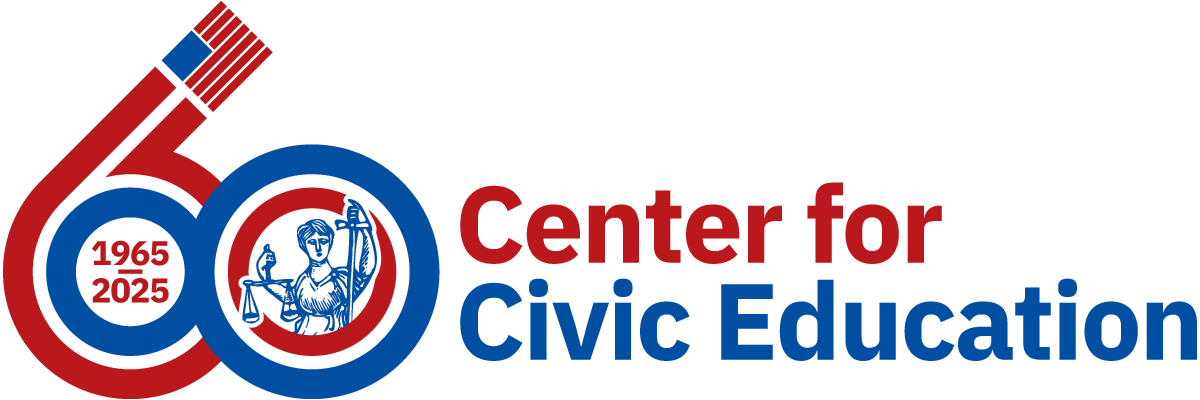| LESSON PLAN - Day 1 |
| ENGAGE: ACTIVATE PRIOR KNOWLEDGE |
DIFFERENTIATION |
- Greet students upon entry to the classroom and welcome them to Social Studies.
- Display a series of images that showcase citizens participating in their democracy (Ex: voting, volunteering, jury duty, poll worker, running for office, etc).
- Ask students to observe images and identify the actions taking place.
- Encourage students to brainstorm & share ways people participate in their democracy.
- Teachers may choose to create an anchor chart or encourage the class to create a word cloud together.
|
UDL
- Ensure visual images include long descriptions/alternative text, as needed.
- Ensure images feature a diverse representation reflective of the American population.
- Allow sufficient wait time for students to formulate answers.
- Consider allowing students think-pair-share time to formulate answers.
ELL
- Long descriptions and alternative texts could be translated or provided as audio files, as needed.
|
| EXPLORE: GUIDED/OPEN INQUIRY |
DIFFERENTIATION |
- Tell students that we are beginning a new inquiry lesson today that will cover topics on voting and our democracy.
- Display and introduce the compelling question “Should every citizen be required to participate in our democracy?” Why or why not?
- Ask students to declare their stance on this question using a brainstorming tool. Answers could be collected via Jamboard, Pear Deck, hand-written sticky notes, mind mapping or other brainstorming tool.
- Allow time to share several responses.
- Tell students that you will revisit this question at the end of the inquiry lesson.
- Save the student answers for this activity so you may revisit at the end of inquiry.
|
UDL
- Desks arranged in tables/clusters is recommended to better facilitate student collaboration.
- Break down the compelling question, as needed, possibly providing examples of what it means to participate in democracy.
- Ask a student to rephrase the compelling question for the class.
- Allow sufficient wait time for students to formulate an opinion.
- Consider allowing students think-pair-share time to formulate answers.
ELL
- Compelling question could be translated or provided as audio files, as needed.
|
| EXPLAIN: DISCUSS & SHARE |
DIFFERENTIATION
|
- Tell students in order to answer our larger compelling question, we will break it down into 3 subtopics with 3 supporting questions.
- Display today’s supporting question, “Is voting a duty or responsibility?”
- Using your routine strategy for setting up groups, divide individual tables into 2 groups of 2 students each.
- Provide each table with a placemat with duty written on one half and responsibility written on the other half.
- Assign Group 1 to define duty and Group 2 to define responsibility.
- Instruct partners to discuss their assigned word and brainstorm possible definitions to include on the placemat.
- Now flip the placement and ask each group to define the 2nd word.
- Allow a few students to share their definitions.
- Provide students with accepted vocabulary definitions for this inquiry.
- Tell the students that while The Constitution does make references to the right to vote, it does not specifically state that voting is a law or a mandatory requirement of citizens.
- Return to the supporting question, “Is voting a duty or responsibility?” and take an informal class poll.
|
UDL
- Prompt students to provide synonyms or draw sketches to illustrate the definitions as an alternative option.
- Class poll could be taken with simple thumbs up/thumbs down or secret paper ballot.
ELL
- Supporting questions could be translated or provided as audio files, as needed.
|
|
|
| ELABORATE: APPLY NEW LEARNING |
DIFFERENTIATION |
- Tell students they will now investigate the issues surrounding voting and determine if voting should be a duty or a responsibility by analyzing sources at various stations.
- Provide students access to the Voting: Duty or Responsibility slide deck as well as the Voting Puzzle collection tool.
- Preview the Voting Puzzle collection tool together to ensure students understand the purpose and expectations.
- Using your routine strategy for setting up groups, establish collaborative teams of ideally five students each, allowing each student to be an ‘expert’ for their respective station.
- Allow students time to investigate their respective station and share information with their group.
- Circulate the room to check in on the progress of each group and provide guidance and redirect, as needed.
|
UDL
- Ask a student to rephrase the supporting question for the class.
- Teacher may wish to model how to investigate and analyze Station 1 and expectations for how to complete the puzzle.
- Utilize closed captioning when viewing videos or access the Show Transcript feature (when viewing through YouTube platform), if needed.
- Consider allowing students to utilize a speak-to-type feature to record their answers on the graphic organizer.
- Utilize a text reader function, when needed.
ELL
- Spanish translation copy has been provided for several of the written resources.
- Explore subtitle options to change language when viewing videos through YouTube.
Extension
- Students can create an advertisement for either argument.
|
| EVALUATE: ASSESS & AUTHENTICALLY ENGAGE |
DIFFERENTIATION |
- Return class to full group format.
- Congratulate the young scholars on conducting today’s investigation.
- Distribute Cast Your Ballot to serve as the formative assessment.
- Preview the document together to ensure students understand the purpose and expectations. Allow time for students to complete the ballot independently.
- After completing the ballot, ask students if their responses to this question changed since the introduction of this lesson.
|
UDL
- Alternatively, students could submit audio, video or multimedia responses for the Cast Your Ballot formative assessment.
- Consider allowing students to utilize a speak-to-type feature to record their answers on the ballot, if needed.
Extension
|





